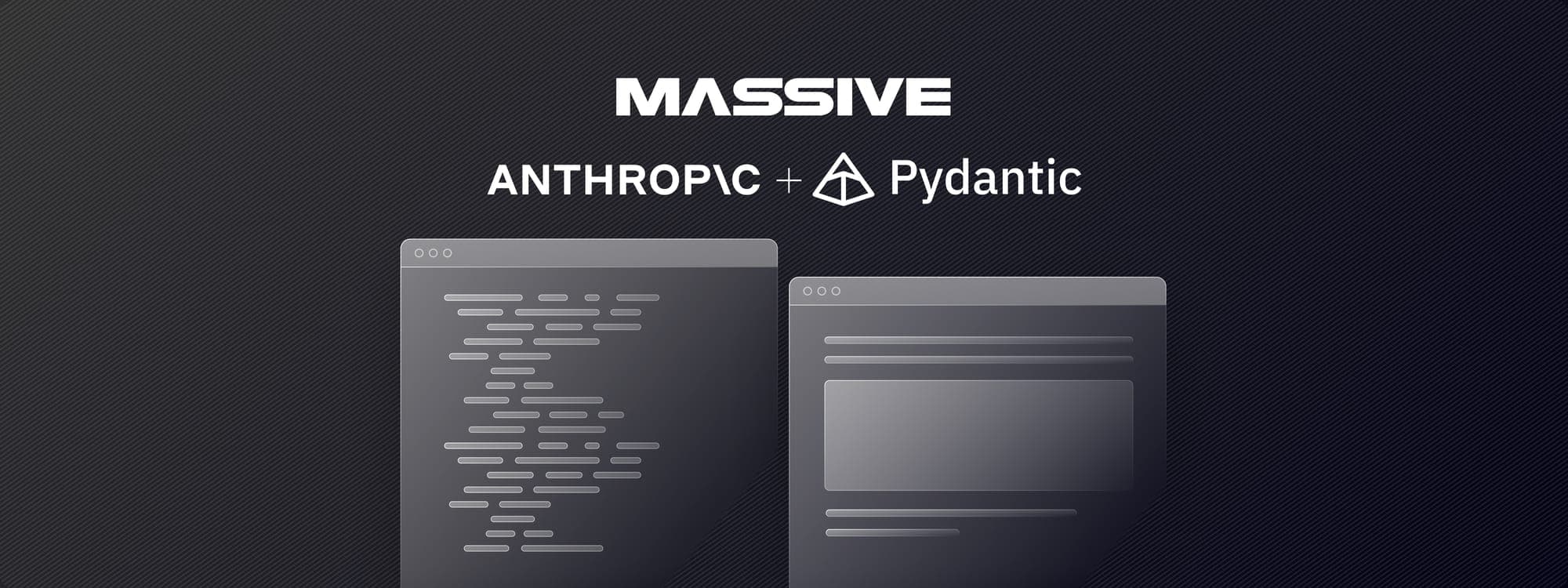
Polygon.io is Now Massive
Polygon.io is now Massive.com. The rebrand reflects our focus on scale, reliability, and continued innovation. Your APIs, accounts, and integrations continue to work without interruption.
editor

Introducing
Oct 30, 2025
We have just renamed Polygon.io to Massive.com, effective today (October 30, 2025) at 4 PM ET. The new name better reflects our focus on scale, reliability, and continued innovation, aligning with the breadth of data, markets, and developers we serve. While the brand has changed, your APIs, accounts, and data quality continue to work exactly as they do today.
Our mission remains the same. We are here to modernize the financial industry with technology built by developers for developers. Too much of the industry still runs on outdated systems, and we are committed to building the infrastructure that powers the next generation of financial applications.
Not much changes for you. Your existing code, keys, and logins remain valid, with no updates required today. We are trying to make this transition as smooth as possible, with both domains operating in parallel for an extended period so you can adopt the new endpoints at your own pace.
We are also releasing new, officially branded
A few visible updates have rolled out with the new brand and domain, but they don't require any action from you.
These changes took effect today, October 30, 2025, at 4 PM ET. All existing APIs and accounts continue to work without interruption.
Code using api.polygon.io will continue to work for an extended period. Over time, we expect most traffic will migrate naturally as customers upgrade to newer SDK versions. We plan to phase out support for the old endpoints in the new year, but we'll provide plenty of notice and time to ensure a seamless transition.
We are proud of what we have built as Polygon.io and excited for what's next as Massive. Our focus stays on building the infrastructure for the next generation of financial applications, with ongoing support for both domains so that you can adopt the new endpoints at your own pace. We recommend migrating to the
Justin
editor
See what's happening at Massive

Polygon.io is now Massive.com. The rebrand reflects our focus on scale, reliability, and continued innovation. Your APIs, accounts, and integrations continue to work without interruption.
editor

Effective Nov 3, 2025, bid_size/ask_size will be reported in shares (not round lots) across Stocks Quotes REST API, WebSocket, and Flat Files, per SEC MDI rules. The rule is forward-looking and we’ll also backfill history for consistency. Most users need no changes.
editor

Learn how to use Massive's MCP server inside of a Pydantic AI agentic workflow, alongside Anthropic's Claude 4 and the Rich Python library.

alexnovotny